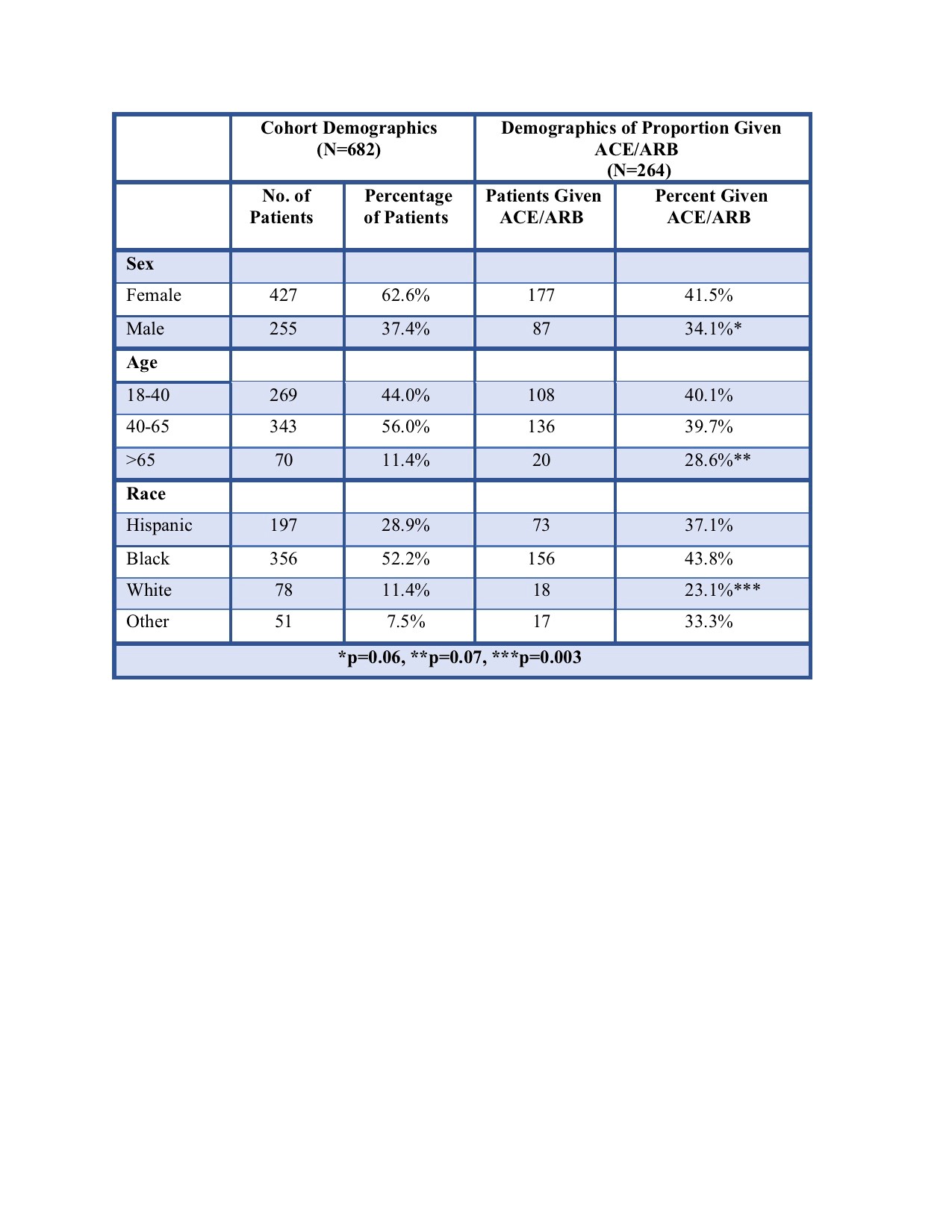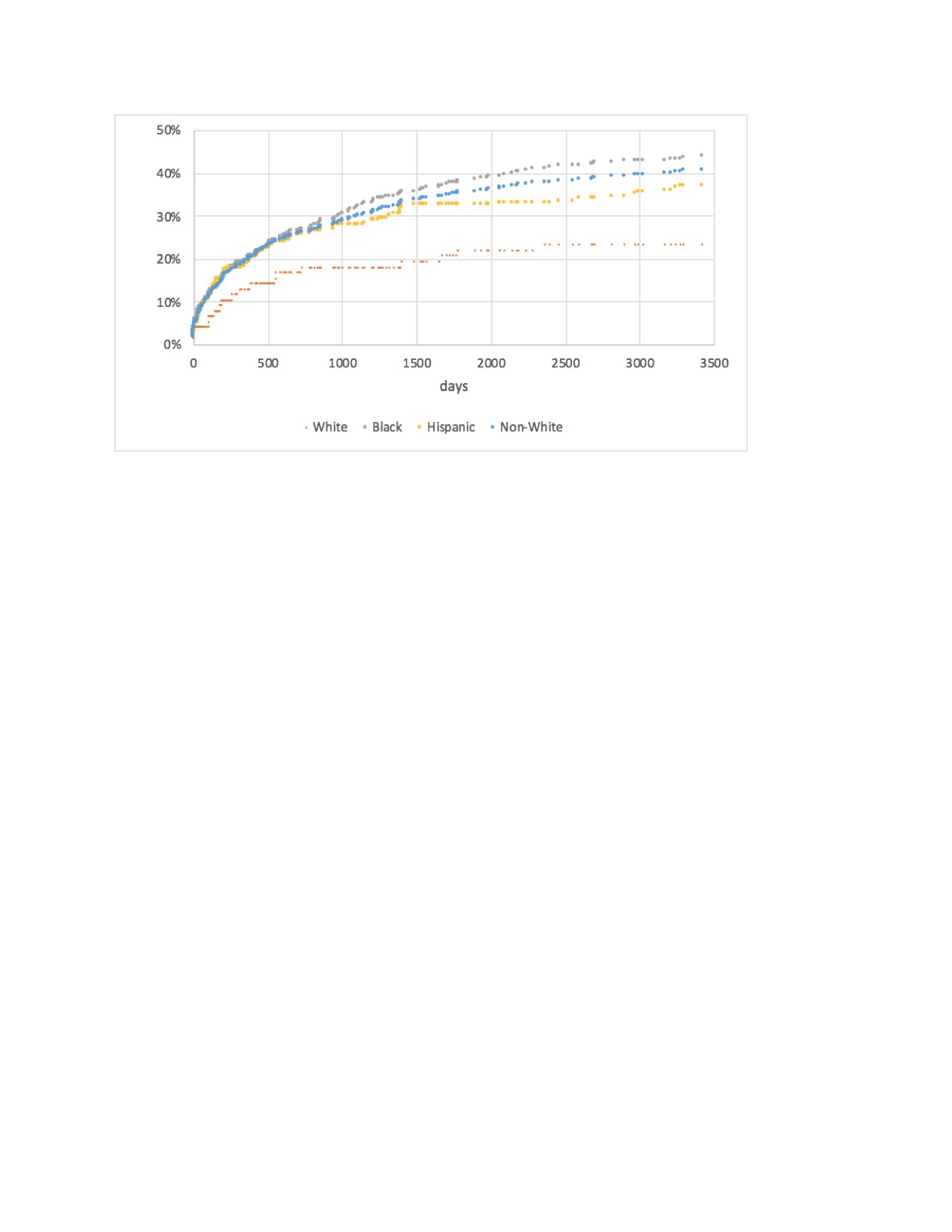Session Information
Session Type: Poster Session B
Session Time: 9:00AM-11:00AM
Background/Purpose: Black patients with lupus nephritis have worse renal outcomes compared with their White counterparts. Currently, there is a paucity of data evaluating the use of angiotensin-converting enzyme inhibitors (ACE) and angiotensin receptor blockers (ARB) in lupus patients with proteinuria despite their well-established benefits. The objective of this study was to examine the prescribing patterns of ACE/ARB in lupus patients with laboratory evidence of proteinuria, focusing on demographic factors such as race/ethnicity, gender and age.
Methods: The study population comprised patients seen in an urban academic medical center from January 1, 2000 through September 12, 2020 with at least one ambulatory encounter and a diagnosis code associated with either lupus or lupus nephritis. Proteinuria was defined according to the American College of Rheumatology (ACR) definition of renal disease, which includes a urine protein 3+ or above (300 mg/dL or greater), a urine protein creatinine ratio > 0.5, a 24-hour urine protein excretion greater than 0.5g, or a urine microalbumin/creatinine ratio greater than 50. The time interval from the first laboratory result indicating proteinuria in patients naive to an ACE/ARB to the day of ACE/ARB prescription was measured in days.
Results: Data show 39% of lupus patients with laboratory evidence of proteinuria were prescribed an ACE/ARB during the study time frame. For those who received a prescription, the median time from the detection of proteinuria to the prescription of an ACE/ARB was 382 days. Non-White patients (Black, Hispanic, and Other) were more frequently prescribed an ACE or an ARB compared with White patients (p=0.005). There was also a trend indicating higher prescription rates for female patients compared with male patients (p=0.06). There was a non-statistically significant reduction in prescription of ACE/ARB in patients greater than 65 years old.
Conclusion: Our study reveals a pattern of incomplete and delayed treatment of proteinuria with an ACE/ARB in lupus patients with evidence of proteinuria. Less than half of lupus patients with proteinuria received an ACE/ARB during the study timeframe, with Non-White patients significantly more likely to receive an ACE/ARB than White patients. The median time to ACE/ARB initiation was greater than a year. We intend to conduct further analysis to investigate hypertension as a potential confounding factor in the earlier initiation of an ACE/ARB among Non-White patients. Additionally, we plan to examine the time elapsed from proteinuria diagnosis to the prescription of immunosuppressive medications. These additional analyses will provide insight into optimizing timely evidence-based management of lupus nephritis patients.
To cite this abstract in AMA style:
JANSZ J, GALLANTER W, Adams E, Sweiss N, Chang H. Prescribing Patterns in Lupus Nephritis: Analyzing Time from Proteinuria to Prescription of ACE/ARB [abstract]. Arthritis Rheumatol. 2023; 75 (suppl 9). https://acrabstracts.org/abstract/prescribing-patterns-in-lupus-nephritis-analyzing-time-from-proteinuria-to-prescription-of-ace-arb/. Accessed .« Back to ACR Convergence 2023
ACR Meeting Abstracts - https://acrabstracts.org/abstract/prescribing-patterns-in-lupus-nephritis-analyzing-time-from-proteinuria-to-prescription-of-ace-arb/


